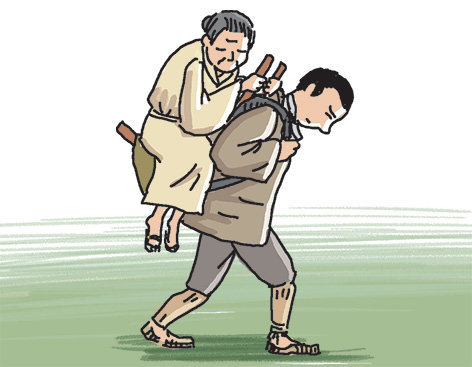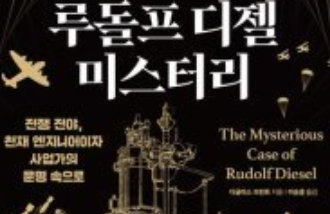Mountain of sadness
Mountain of sadness
Posted April. 20, 2022 07:54,
Updated April. 20, 2022 07:54

We often use mythology to restore our lives. This is one of the reasons why myths exist.
The story took place a long time ago in a remote mountain village. Everyone who lived there was poor. It was hard to make the ends meet, no matter how hard they tried. This gave way to a strange custom: seniors turning the age of 70 were abandoned in the mountains. In face of impoverishment, seniors were seen as disposables.
Some resisted to this custom, however. A son who took his mother up the mountains cried, saying that he could not leave her, while the mother slapped and told him to follow the rules of life. It was a brutal custom. The son cried openly while the mother hid her tears. In the end, the son leaves the mother, Freud’s reality principle triumphs. When he returned home, he found his wife wearing his mother’s clothes. Some people are abandoned while the rest continue to live their lives, wearing their old clothes and portions of food.
This story was told from the novel Narayama Bushiko by Shichiro Fukazawa, which was made into a movie by Shohei Imamura. It seems like a far-fetched story, but it may have happened in poor villages where social laws were not applicable. There are similar fables in traditional Korean fairy tales. Such situations may have been more likely in famine, where existence itself is threatened. Perhaps that was why in the novel, the story tells that the seniors that arrived at the Narayama Mountain would meet the guardian spirit and go to heaven. Such fantasy is desperately needed to help reassure the hearts of the parents and their children to overcome the sadness following their parting.
Walter Benjamin once said, “There is no document of civilization that is not at the same time a document of barbarism.” Such times were barbarous, but is it less so now? Are poor seniors no longer regarded as burdensome? Perhaps the Mountain of Sadness where the seniors had been discarded to are still evident in our lives today, only in different form and without myths.



![장마당서 옷 팔던 北처녀, 인사동 개인전 열기까지[주성하의 북에서 온 이웃]](https://dimg.donga.com/c/138/175/90/1/wps/NEWS/IMAGE/2025/12/05/132901507.1.jpg)

![병원비 50만 원, 조리원비 5000만 원…‘조리원 호캉스’ 시대 [이미지의 포에버 육아]](https://dimg.donga.com/c/138/175/90/1/wps/NEWS/IMAGE/2025/12/07/132913944.1.jpg)
![전셋집 보일러 고장 났다면 수리비는 집주인 몫[부동산 빨간펜]](https://dimg.donga.com/c/138/175/90/1/wps/NEWS/IMAGE/2025/12/04/132901947.1.jpg)
